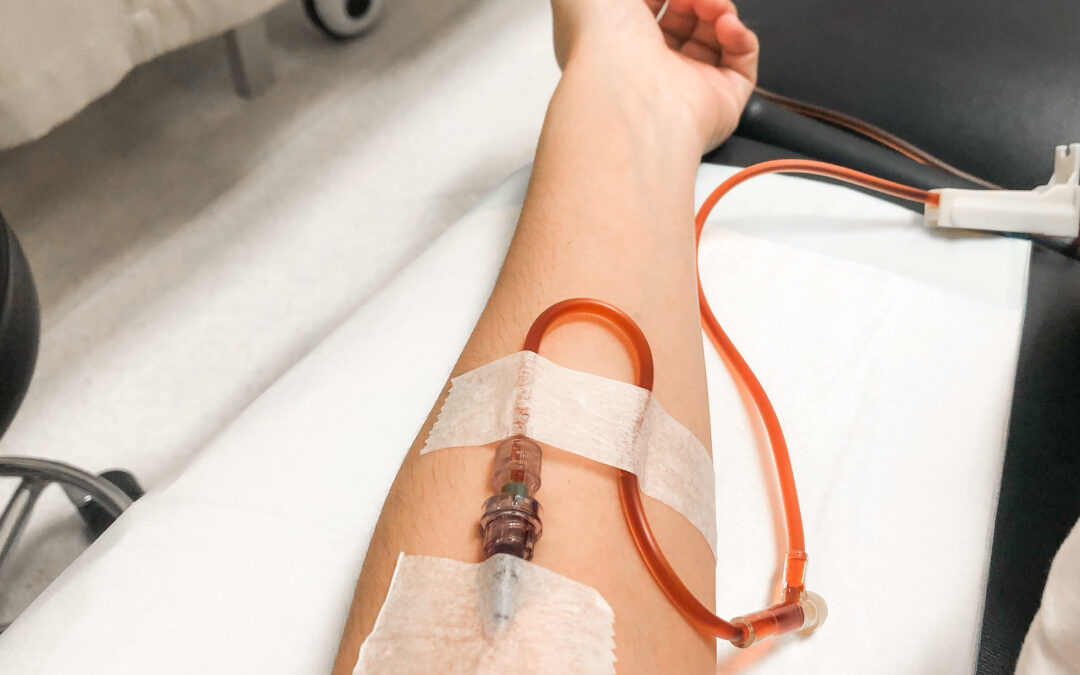Patients are often recommended iron infusions because they cannot tolerate oral iron due to side effects, extremely low iron levels or in an emergency from acute blood loss. In my own clinic, I used to utilize iron infusions to help patients with anemia or low ferritin get over the top with their low iron. Iron infusions have worked wonders and likely saved many lives.
Iron infusions were historically needed because standard oral iron amino acid chelates, and salts had such low efficacy and so many side effects.,
Given the high potential for allergic reaction and non-allergic negative reaction to iron, along with the high cost to the clinic and patient I discontinued iron infusions about three years ago. But I didn’t just stop iron infusions and let my iron-deficient patients flounder in the mess that is standard iron supplementation.
I found a golden ticket to raising iron levels ultra-efficiently with essentially no side effects that came in the form of an oral whole protein iron delivery system. You can read all about it here.
How much does an iron infusion cost?
Iron infusions are big business. For those who have received an iron infusion you are already well aware of the steep price tag. Iron infusions currently vary from $825 to $3,087 per infusion. Is this not wild? Iron is a necessity for life and yet to get it via intravenous infusion is over the top costly. Patients start with iron poor blood and end up financially poor as well. An iron infusion is rarely a one-time therapy. Most patients going the iron infusion route will require at a minimum, three iron infusions.
Do Iron Infusions have side effects?
Iron itself is notoriously problematic given the many side effects of standard iron supplements. The same goes for iron infusions. Outside of an actual allergy, iron dextran is the least problematic and iron sucrose is the most problematic, of the different types of iron available for infusion.
It is crucial that your vitamin D levels are optimal before receiving intravenous iron, as well as calcium, and phosphate levels. If not, you are at heightened risk of hypophosphataemia which can manifest as severe anxiety, muscle cramps, palpitations, fatigue, dizziness and nausea to name a few symptoms. Phosphorus is an essential mineral for energy production of every tissue in your body, so it is vital to keep it balanced and sufficient going into an iron infusion. One study showed that 51% of people with iron infusion-induced hypophosphataemia experienced symptoms for up to 6 months. Unfortunately, one of the main symptoms of iron-deficient patients is fatigue and yet the bolus iron infusion itself is inducing fatigue by reducing phosphate levels.
Talk to your doctor about supplementing with vitamin D, calcium and phosphorus even if your levels are within the normal range to minimize potential hypophosphataemia episodes related to the iron infusion.
Insulin resistance and weight gain are also related to iron infusions. This is thought to be related to the excess iron in the blood causing oxidative stress when iron is given via iron infusion. Weight gain is often a symptom of iron deficiency and can be very disconcerting to patients who are hoping to turn their body composition around by increasing their iron and unknowingly potentiating insulin resistance through iron infusions.
Annual iron infusions are associated with carotid artery intima thickness. This is a consistent marker for atherosclerosis. The greater the thickness, the greater the arterial damage and oxidative stress present within the blood vessels. When the endothelium (inner lining of blood vessels) is damaged by pro-oxidant molecules like free iron from an infusion, it triggers a cascade of inflammatory events, which if not stopped will cause remodeling and hardening of the arteries.
Vitamin C and Vitamin E decrease with iron infusions
The Journal of Nephrology showed that treatment with intravenous iron but not saline was associated with decreased plasma ascorbate (vitamin C) and α-tocopherol (vitamin E) levels and increased oxidized glutathione/reduced glutathione ratio. They concluded their work by stating, intravenous iron sucrose provokes oxidative damage to peripheral blood lymphocyte DNA in hemodialysis patients.
It should also be mentioned that another study demonstrated that taking high-dose vitamin E with iron infusions could reduce some of the lipid peroxidation induced by the intravenous iron bolus.
Should I get an iron infusion?
There are cases of acute blood and iron loss, such as trauma and long-standing menorrhagia where iron infusions may offset any potential negative effects. However, other than in these circumstances I have not found it necessary to use iron infusions even in the cases of intensive anemia since discovering the whole protein chelated iron system.
References:
Kuo KL, Hung SC, Wei YH, Tarng DC.(2008). Intravenous iron exacerbates oxidative DNA damage in peripheral blood lymphocytes in chronic hemodialysis patients. J Am Soc Nephrology, 19(9):1817-1826. doi:10.1681/ASN.2007101084
Acute Injury with Intravenous Iron and Concerns Regarding Long-Term Safety Kalkidan Bishu and Rajiv Agarwa. Clin J Am Soc Nephrol, 1: S19 –S23, 2006. doi: 10.2215/CJN.01420406
Yokus Osman, Gedik Habip.(2016). Is iron treatment related to weight gain in female patients with iron deficiency anemia? Egyptian Journal of Haematology,Volume 41 (2):42-44.

